
Makati: The Heartbeat of Manila
Discover Makati: Manila's bustling financial hub with a vibrant mix of modernity, culture, and nightlife. Explore lush parks, world-class museums, and trendy Poblacion.
Makati, often referred to as the financial hub of the Philippines, is a vibrant blend of modernity and rich cultural heritage. Boasting an impressive skyline filled with towering skyscrapers, Makati is home to some of the country's most luxurious hotels, world-class shopping centers, and exquisite dining options. It's a place where business meets leisure, offering a unique experience for every visitor. As you stroll through Ayala Avenue, often dubbed the 'Wall Street of the Philippines,' you'll be surrounded by an array of high-rise buildings, bustling offices, and sophisticated establishments. Don't miss the Ayala Triangle Gardens, a lush green oasis in the midst of the urban jungle, perfect for a leisurely walk or a relaxing picnic. The park also hosts seasonal light shows and events, adding a magical touch to your visit. For history enthusiasts, the Ayala Museum offers a deep dive into the Philippines' rich past, featuring a vast collection of artifacts and dioramas. Art lovers will appreciate the museum's rotating exhibits showcasing contemporary Filipino artists. When it comes to shopping, Greenbelt and Glorietta malls offer everything from high-end fashion brands to local crafts, ensuring a delightful retail experience. Nightlife in Makati is nothing short of spectacular. Poblacion, Makati's hip and trendy neighborhood, is teeming with bars, restaurants, and clubs. Whether you're looking to enjoy a quiet drink with a view at a rooftop bar or dance the night away, Poblacion has something to offer. The food scene in Makati is equally impressive, with a wide range of restaurants serving both local and international cuisine. Makati is not just a place to visit; it's an experience that captures the essence of Manila's dynamic spirit. From its bustling streets to its serene parks, every corner of Makati tells a story, waiting to be discovered.
Local tips in Makati
- Visit Ayala Triangle Gardens in the evening for the seasonal light shows.
- Explore Poblacion for a diverse nightlife experience with bars and clubs.
- Take time to visit the Ayala Museum for a comprehensive look at Filipino history and art.
- Shop at Greenbelt and Glorietta for a mix of luxury brands and local crafts.
- Use ride-hailing apps like Grab for convenient and safe transportation around Makati.
Makati: The Heartbeat of Manila
Makati, often referred to as the financial hub of the Philippines, is a vibrant blend of modernity and rich cultural heritage. Boasting an impressive skyline filled with towering skyscrapers, Makati is home to some of the country's most luxurious hotels, world-class shopping centers, and exquisite dining options. It's a place where business meets leisure, offering a unique experience for every visitor. As you stroll through Ayala Avenue, often dubbed the 'Wall Street of the Philippines,' you'll be surrounded by an array of high-rise buildings, bustling offices, and sophisticated establishments. Don't miss the Ayala Triangle Gardens, a lush green oasis in the midst of the urban jungle, perfect for a leisurely walk or a relaxing picnic. The park also hosts seasonal light shows and events, adding a magical touch to your visit. For history enthusiasts, the Ayala Museum offers a deep dive into the Philippines' rich past, featuring a vast collection of artifacts and dioramas. Art lovers will appreciate the museum's rotating exhibits showcasing contemporary Filipino artists. When it comes to shopping, Greenbelt and Glorietta malls offer everything from high-end fashion brands to local crafts, ensuring a delightful retail experience. Nightlife in Makati is nothing short of spectacular. Poblacion, Makati's hip and trendy neighborhood, is teeming with bars, restaurants, and clubs. Whether you're looking to enjoy a quiet drink with a view at a rooftop bar or dance the night away, Poblacion has something to offer. The food scene in Makati is equally impressive, with a wide range of restaurants serving both local and international cuisine. Makati is not just a place to visit; it's an experience that captures the essence of Manila's dynamic spirit. From its bustling streets to its serene parks, every corner of Makati tells a story, waiting to be discovered.
Iconic landmarks you can’t miss
Ayala Triangle Gardens
Discover the serene beauty of Ayala Triangle Gardens, a lush urban park in Makati, perfect for relaxation and cultural experiences.
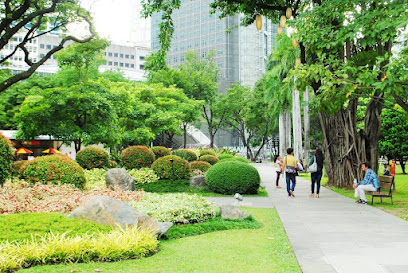
Washington Sycip Park
Discover the serene beauty of Washington Sycip Park, a lush oasis in Makati, blending nature and urban life for a unique travel experience.

Ayala Museum
Discover the rich cultural heritage of the Philippines at Ayala Museum, a premier art destination in Makati's vibrant Ayala Center.

Makati Museum
Explore the captivating history and cultural heritage of Makati at the Makati Museum, a gem for history buffs and casual tourists alike.

Ninoy Aquino Monument - Makati City
Explore the Ninoy Aquino Monument in Makati City – a powerful tribute to a national hero and a significant piece of Philippine history.

Pio del Pilar Monument
Discover the Pio del Pilar Monument, a historical landmark in Makati that celebrates the rich cultural heritage of the Philippines.

Gabriela Silang Monument
Explore the Gabriela Silang Monument in Makati, a symbol of bravery and heritage in the heart of the bustling business district.

Nielson Tower Historical Marker
Discover Makati's past at the Nielson Tower Historical Marker, a symbol of the city’s aviation history and architectural beauty.
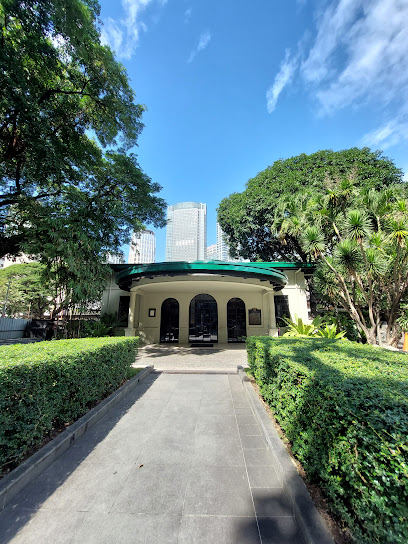
McMicking Memorial & Courtyard
Discover the McMicking Memorial & Courtyard: A serene historical landmark in Ayala Triangle Gardens, celebrating Filipino heritage amidst lush surroundings.

Manila City/Makati City District Boundary
Discover the vibrant cultural intersection of Manila and Makati at the historical district boundary, where heritage meets modern urban life.

Unmissable attractions to see
Ayala Triangle Gardens
Discover the serene beauty of Ayala Triangle Gardens, an urban park in Makati perfect for relaxation, dining, and cultural events amidst the cityscape.

Yuchengco Museum
Explore the Yuchengco Museum, a vibrant modern art and sculpture museum in Makati, showcasing the rich talent of Filipino artists.

The Mind Museum
Immerse yourself in science at The Mind Museum, a captivating destination for curious minds in Taguig, Metro Manila.
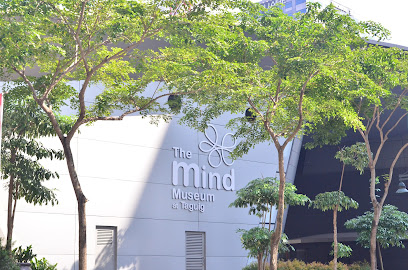
Legazpi Active Park
Discover Legazpi Active Park, an urban oasis in Makati offering a blend of relaxation, recreation, and local culture amidst the city's vibrant atmosphere.
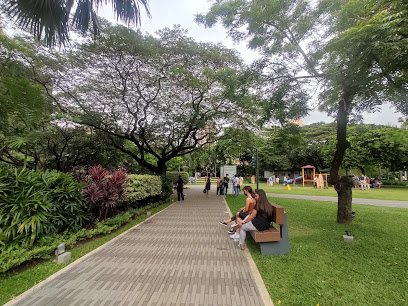
Washington Sycip Park
Explore Washington Sycip Park, Makati: a serene urban escape surrounded by nature and skyscrapers, perfect for relaxation and leisure.
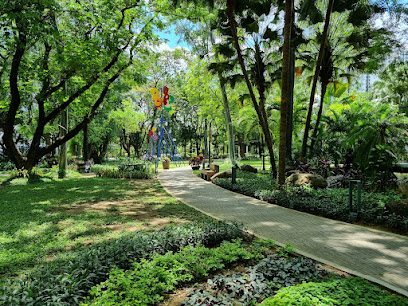
Ayala Museum
Explore the rich history and vibrant art of the Philippines at Ayala Museum, a cultural landmark in Makati's Ayala Center.

Jaime C. Velasquez Park
Experience the lush greenery and vibrant local culture at Jaime C. Velasquez Park, a serene escape in the heart of Makati's bustling city life.

Greenbelt Park
Discover tranquility at Greenbelt Park, a lush urban oasis in Makati, where nature meets modernity for a refreshing escape.

Makati Museum
Explore the vibrant history and culture of Makati at Makati Museum, a must-visit destination for every tourist in Metro Manila.
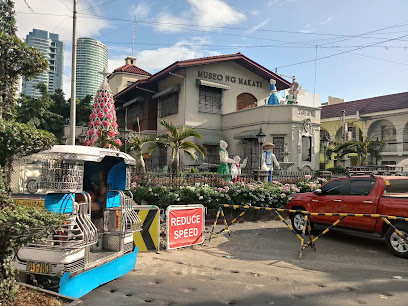
Batman’s House
Explore the whimsical Batman's House in Makati, a must-see attraction for comic book fans and curious travelers alike.

Essential places to dine
Blackbird Makati
Discover culinary excellence at Blackbird Makati – where modern flavors meet timeless elegance in Metro Manila's vibrant dining scene.

Crying Tiger Street Kitchen
Experience authentic Thai flavors at Crying Tiger Street Kitchen in Makati – where every dish tells a story of culinary tradition.
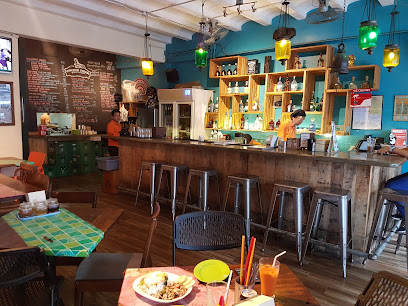
Rumba
Experience authentic Mediterranean cuisine at Rumba in Makati's Ayala Triangle Gardens – where every dish tells a story.

Sala Bistro
Experience the vibrant culinary scene at Sala Bistro in Makati - where exquisite dishes meet inviting ambiance for unforgettable moments.

Sala Restaurant
Experience modern European cuisine at Sala Restaurant in Makati – where culinary innovation meets elegance.

Lampara
Experience authentic Filipino flavors at Lampara in Makati - where tradition meets modern dining.

M Dining + Bar M
Experience fine dining excellence at M Dining + Bar M in Makati - where culinary artistry meets exceptional wines.

Shang Palace at Makati Shangri-La, Manila
Experience exquisite Chinese cuisine at Shang Palace in Makati Shangri-La - where tradition meets elegance in every bite.

Sage Bespoke Grill at Makati Shangri-La, Manila
Discover culinary excellence at Sage Bespoke Grill - where premium steaks meet sophisticated dining in the heart of Makati.

Noche: Dine in the Dark
Experience culinary magic at Noche: Dine in the Dark - where every meal is an adventure for your senses in Makati.

Markets, malls and hidden boutiques
The Lifestyle Store - Makati
Explore The Lifestyle Store in Makati for a diverse shopping experience featuring fashion, home goods, and unique local products.

Kultura Filipino
Discover the essence of Filipino culture at Kultura Filipino, your go-to souvenir store in Makati offering authentic crafts and local delicacies.

Aniporium
Discover the ultimate anime and collectibles haven at Aniporium in Makati, where every fan's dream comes to life with a vast selection and vibrant community.

IT'S VINTAGE - Legazpi Village
Explore IT'S VINTAGE in Legazpi Village for unique vintage clothing and accessories that blend timeless style with modern flair.

Frankie & Friends General Store
Explore Frankie & Friends General Store in Makati for unique gifts, local artistry, and a charming shopping experience in the heart of Metro Manila.

Balikbayan Handicrafts - The Landmark
Discover the essence of Filipino craftsmanship at Balikbayan Handicrafts in Makati, where every souvenir tells a unique story.

Papemelroti Glorietta 1
Explore Papemelroti Glorietta 1 for unique handcrafted gifts and souvenirs that embody Filipino creativity in the heart of Makati.

I Love You Store
Explore vibrant Filipino fashion at I Love You Store in Makati, a unique clothing destination for tourists seeking authentic style.

Affniqchic Boutique
Explore Affniqchic Boutique in Makati for unique women's fashion, stylish bags, and trendy shoes that highlight your individuality.

Quirks Novelties & Curiosities
Uncover unique gifts and souvenirs at Quirks Novelties & Curiosities, the ultimate destination for eclectic finds in Makati's Power Plant Mall.

Essential bars & hidden hideouts
The Fun Roof
Experience the vibrant nightlife of Makati at The Fun Roof, a rooftop bar with an extensive drink menu and stunning city views.

Secret Door
Unveil the hidden nightlife at Secret Door, a unique pub in Makati offering craft cocktails and an inviting atmosphere for an unforgettable evening.

The Spirits Library
Experience a vibrant cocktail culture at The Spirits Library in Makati, featuring creative drinks and a lively atmosphere perfect for unwinding.
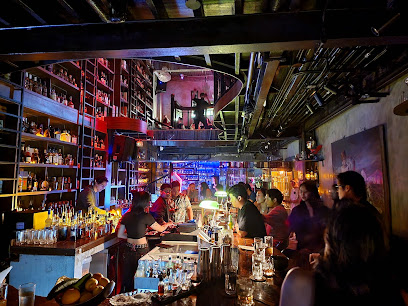
Union Jack Tavern - Makati
Discover authentic British cuisine and vibrant pub culture at Union Jack Tavern in Makati, your go-to spot for a delightful dining experience.

Long Bar
Discover the elegance of Long Bar, a luxury bar in Makati offering signature cocktails, live music, and a vibrant nightlife experience.

The Blind Pig
Discover the enchanting ambiance and artisanal cocktails of The Blind Pig, a premier speakeasy bar in the heart of Makati.

Mistral
Experience the vibrant nightlife of Makati at Mistral, a chic bar offering exquisite cocktails and stunning skyline views in a stylish setting.
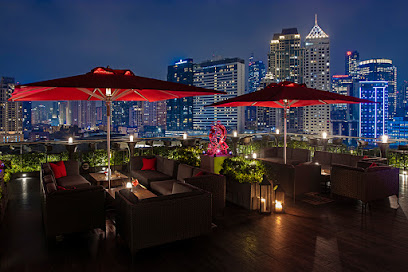
Bar 10 Four
Experience the vibrant nightlife at Bar 10 Four in Makati, where expertly crafted cocktails meet an energetic atmosphere.

Funky Monkey 143 Bar
Experience the vibrant nightlife at Funky Monkey 143 Bar in Makati, where fun meets flavor in the heart of Metro Manila's entertainment scene.

Crazy Horse
Discover the electrifying energy of Crazy Horse, a premier bar in Makati, where nightlife comes alive with great drinks and vibrant entertainment.

Local Phrases
-
- HelloKamusta
[ka-mus-ta] - GoodbyePaalam
[pa-a-lam] - YesOo
[o-o] - NoHindi
[hin-di] - Please/You're welcomePaki
[pa-ki] - Thank youSalamat
[sa-la-mat] - Excuse me/SorryPasensya
[pa-sen-sya] - How are you?Kamusta ka?
[ka-mus-ta ka?] - Fine. And you?Mabuti. Ikaw?
[ma-bu-ti. i-ka-w?] - Do you speak English?Nagsasalita ka ba ng Ingles?
[nag-sa-sa-li-ta ka ba ng in-gles?] - I don't understandHindi ko maintindihan
[hin-di ko main-tin-di-han]
- HelloKamusta
-
- I'd like to see the menu, pleaseGusto ko po makita ang menu
[gus-to ko po ma-ki-ta ang me-nu] - I don't eat meatHindi ako kumakain ng karne
[hin-di a-ko ku-ma-ka-in ng kar-ne] - Cheers!Tagay!
[ta-ga-y!] - I would like to pay, pleaseGusto ko pong magbayad
[gus-to ko pong mag-ba-ya-d]
- I'd like to see the menu, pleaseGusto ko po makita ang menu
-
- Help!Tulong!
[tu-long!] - Go away!Lumayo ka!
[lu-ma-yo ka!] - Call the Police!Tumawag ng pulis!
[tu-ma-wag ng pu-lis!] - Call a doctor!Tumawag ng doktor!
[tu-ma-wag ng dok-tor!] - I'm lostNawawala ako
[na-wa-wa-la a-ko] - I'm illMay sakit ako
[may sa-kit a-ko]
- Help!Tulong!
-
- I'd like to buy...Gusto ko bumili ng...
[gus-to ko bu-mi-li ng] - I'm just lookingNagtitipid lang ako
[nag-ti-ti-pid lang a-ko] - How much is it?Magkano ito?
[mag-ka-no i-to?] - That's too expensiveMahal masyado
[ma-hal ma-sya-do] - Can you lower the price?Pwede bang babaan ang presyo?
[pu-we-de bang ba-ba-an ang pres-yo?]
- I'd like to buy...Gusto ko bumili ng...
-
- What time is it?Anong oras na?
[a-nong o-ras na?] - It's one o'clockAlas-uno na
[a-las-u-no na] - Half past (10)Alas-diyes y media
[a-las-di-yes y me-dya] - MorningUmaga
[u-ma-ga] - AfternoonHapon
[ha-pon] - EveningGabi
[ga-bi] - YesterdayKahapon
[ka-ha-pon] - TodayNgayon
[nga-yon] - TomorrowBukas
[bu-kas] - 1Isa
[i-sa] - 2Dalawa
[da-la-wa] - 3Tatlo
[tat-lo] - 4Apat
[a-pat] - 5Lima
[li-ma] - 6Anim
[a-nim] - 7Pito
[pi-to] - 8Walo
[wa-lo] - 9Siyam
[si-yam] - 10Sampu
[sam-pu]
- What time is it?Anong oras na?
-
- Where's a/the...?Nasaan ang...?
[na-sa-an ang...?] - What's the address?Anong address?
[a-nong ad-dres?] - Can you show me (on the map)?Pwede mo ba akong ipakita (sa mapa)?
[pu-we-de mo ba a-kong i-pa-ki-ta (sa ma-pa)?] - When's the next (bus)?Kailan ang susunod na (bus)?
[ka-i-lan ang su-su-nod na (bus)?] - A ticket (to ....)Isang ticket (papunta sa ....)
[i-sang ti-ket (pa-pun-ta sa ....)]
- Where's a/the...?Nasaan ang...?
History of Makati
-
Before the arrival of the Spanish in the 16th century, the area now known as Makati was inhabited by indigenous groups, primarily the Tagalog people. The region was a thriving community engaged in trade, agriculture, and fishing, benefiting from its strategic location near the Pasig River. This period laid the foundation for Makati's future as a commercial hub.
-
Makati was officially established as a town in 1901, but its significance traces back to the Spanish colonial period when it was part of the larger province of Manila. The establishment of the parish of Nuestra Señora de los Remedios in 1620 helped formalize its administrative boundaries and fostered the growth of a Christian community.
-
Under American colonial rule in the early 20th century, Makati began to transform into an urban center. The Americans implemented significant infrastructure projects, including roads and schools, which attracted more settlers and businesses. This period marked the beginning of Makati's development into the financial district it is known for today.
-
After the devastation of World War II, Makati experienced rapid economic growth. The establishment of the Makati Commercial Center in the 1960s spearheaded the transformation of the area into the primary business district of the Philippines. This development attracted multinational companies and investment, solidifying Makati's reputation as the country's financial center.
-
Today, Makati is not only a financial hub but also a vibrant cultural center. The area boasts a mix of modern skyscrapers, shopping malls, art galleries, and restaurants that reflect both local and international influences. Cultural events, festivals, and a diverse population contribute to Makati's dynamic atmosphere, making it a significant part of Manila's identity.
Makati Essentials
-
Makati is conveniently located in Metro Manila and can be accessed from various neighborhoods. From the airport, you can take a taxi or a ride-sharing service like Grab directly to your destination in Makati, which takes around 30 minutes depending on traffic. If you are coming from other areas in Manila, the MRT-3 line has a station at Ayala Avenue, which is a major thoroughfare in Makati. Buses and jeepneys also connect Makati with other districts, but be prepared for traffic delays.
-
Makati is well-served by public transport. The MRT-3 line runs along EDSA, providing quick access to key areas. Buses and jeepneys are also available, with specific routes covering the main areas of Makati. For a more local experience, consider riding a bicycle, as some areas have bike lanes. Taxis and ride-sharing services like Grab are widely used and can be a convenient way to navigate the city, especially during peak hours.
-
Makati is generally considered safe for tourists, especially in commercial areas like Ayala Center and Greenbelt. However, avoid walking alone late at night in less populated areas, particularly near the outskirts. Petty crimes like pickpocketing can occur in crowded places, so always stay vigilant. Areas like Barangay Pio del Pilar have reported higher crime rates, so it's advisable to exercise caution when traveling through these neighborhoods.
-
In case of an emergency, dial 911 for police, medical, or fire assistance. Familiarize yourself with the location of the nearest hospital, such as Makati Medical Center. It’s advisable to have travel insurance that includes medical coverage. For minor health issues, pharmacies are available throughout Makati, and many are open 24/7.
-
Fashion: Do dress modestly, particularly in religious sites, and avoid overly casual attire in upscale venues. Religion: Do respect local customs and traditions; when visiting churches, ensure to dress appropriately. Public Transport: Do be courteous and offer your seat to the elderly and pregnant women. Don’t consume food and drinks on public transport. Greetings: Do greet with a warm smile and a handshake. Eating & Drinking: Do try local dishes and accept invitations to share meals. Don’t refuse food offerings, as it can be seen as disrespectful.
-
To experience Makati like a local, visit the local markets such as Salcedo Saturday Market for fresh produce and local delicacies. Engage with locals in cafes or parks; they are often welcoming and eager to share their knowledge of the city. Explore the cultural spaces like the Ayala Museum for insights into Philippine history and art. Finally, try to use the pedestrian walkways and bridges to avoid traffic, especially around busy areas like Ayala Avenue.
Nearby Cities to Makati
-
Things To Do in Tagaytay
-
Things To Do in Angeles City
-
Things To Do in Subic
-
Things To Do in Baguio
-
Things To Do in Sagada
-
Things To Do in Boracay
-
Things To Do in Legazpi
-
Things To Do in Vigan
-
Things To Do in Ilocos Norte
-
Things To Do in Cebu City
-
Things To Do in Puerto Princesa
-
Things To Do in Bohol
-
Things To Do in Palawan
-
Things To Do in Batanes
-
Things To Do in Camiguin












